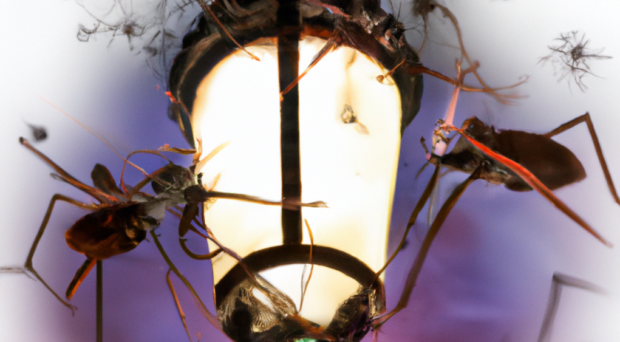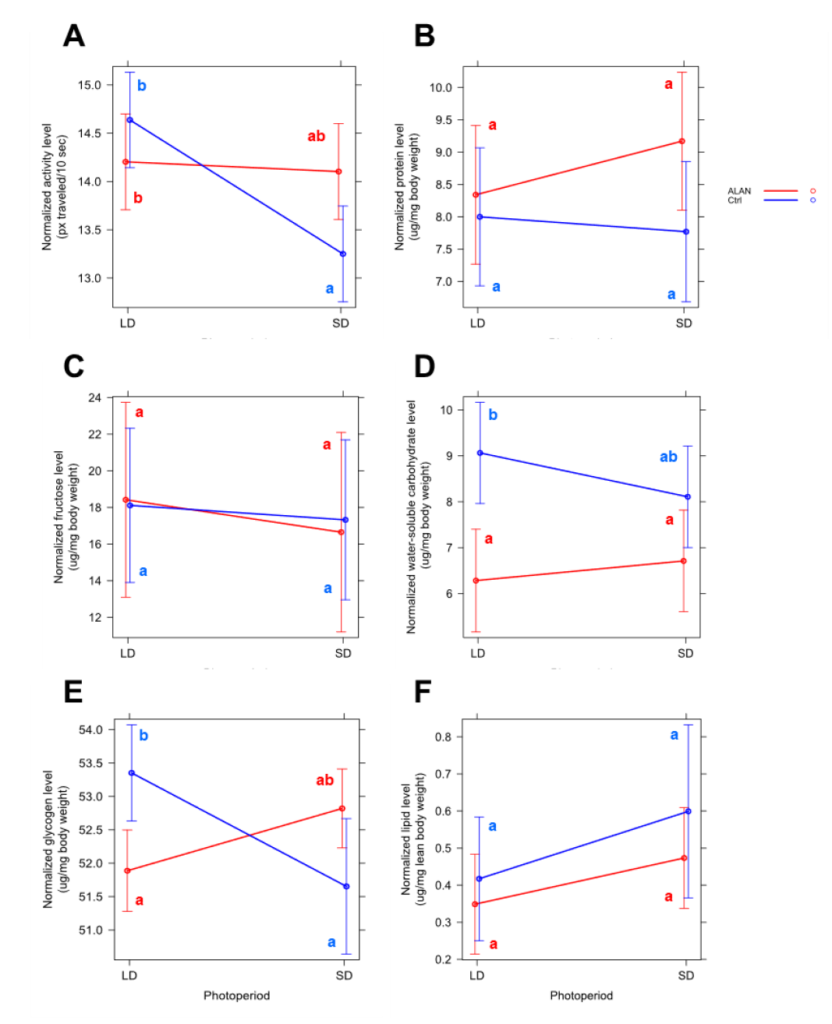
Artificial light at night (ALAN) is defined as any type of light produced by human-made sources that illuminates outdoor environments after sunset. Research has shown that exposure to artificial light at night can disrupt circadian rhythms, which can lead to sleep disorders, mood changes, and other health problems. Additionally, ALAN has been shown to have significant impacts on wildlife and their habitats, including changes in migration patterns and mating behavior.
ALAN can disrupt the natural circadian rhythms and behaviors of many species of animals, including changes in migration patterns, feeding habits, and mating behaviors. Additionally, ALAN can attract insects and other prey, which can have cascading impacts on the food web and ecosystem dynamics. For example, sea turtles have been shown to be disoriented by beachfront lighting, leading to decreased hatchling survival rates. The effects of ALAN on wildlife can have significant and long-lasting impacts on the health and survival of individual species and entire ecosystems.
Mosquitoes are attracted to artificial light sources, and their presence in lit areas can increase the risk of disease transmission. Additionally, exposure to ALAN can alter the behavior and biology of mosquitoes, potentially impacting their ability to locate hosts and mate. For example, a study by Sheppard and others found that exposure to artificial light at night reduced the biting rates of Anopheles mosquitoes and altered their circadian rhythm.
Culex mosquitoes are vectors of West Nile virus and other diseases, and they are attracted to artificial light sources. Diapause is a critical physiological state in the life cycle of mosquitoes that allows them to survive unfavorable conditions, such as cold temperatures or drought. During diapause, mosquitoes suspend their growth, reproduction, and metabolic activity, and they can remain in this state for several months. This enables mosquitoes to survive harsh environmental conditions and ensure their survival for future generations. Diapause is a complex process that is regulated by a combination of environmental and physiological factors, and it plays a critical role in the survival and transmission of mosquito-borne diseases.
Diapause in Culex mosquitoes is regulated by the circadian rhythm, which is the internal biological clock that helps to synchronize physiological processes with the external environment. Photoperiod, or the length of daylight, is a key environmental cue that regulates the circadian rhythm and the onset of diapause in Culex mosquitoes. As the length of daylight decreases, the circadian rhythm of Culex mosquitoes is altered, leading to the induction of diapause. Thus, the regulation of diapause by the circadian rhythm and photoperiod is a critical factor that determines the survival and persistence of Culex mosquitoes, as well as their potential for transmitting diseases.
In a previous study, Lydia R Fyie, Mary M Gardiner and Megan Meuti at the Department of Entomology at Ohio State University found that diapausing mosquitoes exposed to dim Artificial Light at Night (ALAN) only at 4 lux in the lab exited diapause and became reproductively active, acquired less fat content, developed larger egg follicles, fed on vertebrate blood and produced viable eggs and larvae. Their findings indicate that Culex mosquitoes in well-lit areas such as cities might not enter diapause until later in the year, continuing to bite animals and humans, reproducing and potentially transmitting diseases such as West Nile virus after the traditional end of the mosquito season.

In their recently published study, Matt Wolkoff, Lydia R Fyie, and Megan Meuti in the same lab further investigated the impact of ALAN on diapause in both diapausing and non-diapausing Culex mosquitoes (full disclosure: I was one of the reviewers of their manuscript). Both diapausing and non-diapausing mosquitoes were exposed to a single night of ALAN for 6 hours, or a normal dark night of 6 hours, after which they were kept in constant darkness for 2 days to measure their endogenous circadian activity without external day-light cycle. Mosquitoes were individually kept in an ingenious contraption called a FlyBox, where their locomotor activity was recorded using a webcam measuring against an infrared LED floodlight. After the 2 days, mosquitoes were euthanized to measure protein, fructose, water-soluble carbohydrates, glycogen and lipid levels for comparison between diapausing and non-diapausing female Culex mosquitoes, both with and without exposure to ALAN.
The authors found that while diapausing female mosquitoes had significantly lower locomotor activity level compared to non-diapausing mosquitoes, exposure to ALAN substantially (but not quite significantly) increased the activity level of diapausing mosquitoes. While protein and fructose level were similar across all groups, non-diapausing female mosquitoes had higher levels of both water-soluble carbohydrates and glycogen compared to diapausing mosquitoes. However, while ALAN significantly reduced both glycogen and water-soluble carbohydrate levels in non-diapausing mosquitoes, it increased glycogen levels in diapausing female mosquitoes (although not significantly).

So what does all this mean? The authors argue that these findings suggest that light pollution causes non-diapausing female mosquitoes to alter their metabolism or feeding behavior. The reduced glycogen and water-soluble carbohydrates in these mosquitoes may lead to reduced fitness via lower fecundity and shorter lifespan. Conversely, light pollution increases the locomotor activity of diapausing mosquitoes, suggesting that they might be capable of blood-feeding, such as demonstrated in their previous study. This could extend the mosquito season, and increase and prolong the period of high West Nile virus transmission during fall in urban relative to rural areas. In short, our city lights might make mosquitoes weaker during the summer, but stronger and active longer during the fall.
With increasing urbanization globally leading to increased light pollution, more mosquitoes in more areas will come into contact with artificial light, making the results of these studies even more relevant. While we understand the effect of light pollution on diapausing mosqutioes, further studies need to be conducted on the effect of artificial light on non-diapausing mosquitoes in terms of blood-feeding activity, fecundity and survival. One promising avenue could be to compare the seasonality of both Culex population dynamics and West Nile virus transmission in urban vs rural areas that have different levels of light pollution. However, this could be complicated by differences in other important determinants between urban and rural areas, such as temperature, nutrient levels, host availability, species distribution and many others. The effect of Artificial Light at Night (ALAN) is an important new area of study for both mosquitoes and other organisms, and I’m looking forward to learning more about new discoveries from the authors and others in the field.
PS: In writing this blogpost, I had some help from different kinds of AI. A draft form of the first five introductory paragraphs were written by ChatGPT, which I edited to its current form and added links. ChatGPT was unable to assist in the last five paragraphs as these were more specific. I also learned about it’s capabilities and limitations in the process, which I won’t detail here. The featured image was generated by DALL-E for the prompt “Mosquitoes buzzing around a city light pole”.

Comments